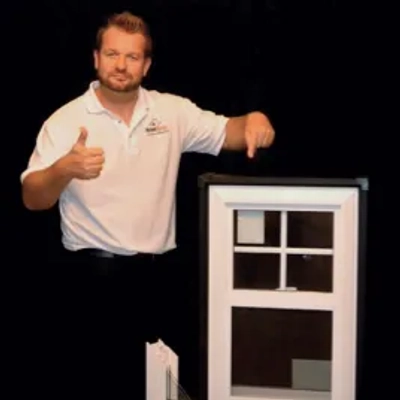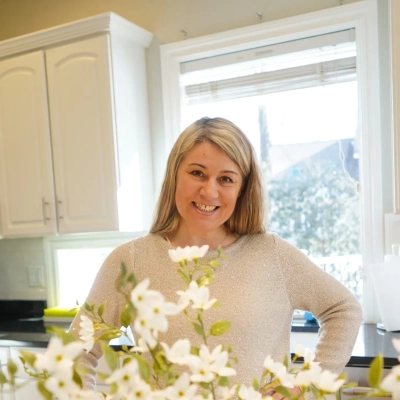17 Tips for Making Small Rooms Appear Larger
Transforming a cramped space into an airy oasis is an art form that many homeowners aspire to master. This comprehensive guide, featuring insights from interior design experts, unveils a treasure trove of clever techniques to visually expand small rooms. From strategic mirror placement to ingenious lighting solutions, these professional tips will help readers create the illusion of spaciousness in even the most compact areas.
- Use Mirrors to Expand Visual Space
- Create Depth with Reflective Surfaces
- Install Continuous Flooring for Cohesive Look
- Layer Lighting to Enhance Room Dimensions
- Extend Window Treatments Beyond Frame
- Paint Monochromatic Scheme with Varying Sheens
- Implement Vertical Storage for Visual Height
- Color-Drench Walls and Ceilings Uniformly
- Choose Exposed-Leg Furniture for Openness
- Remove Visual Barriers for Continuous Sightlines
- Install Large Picture Windows
- Homogenize Surfaces to Blur Visual Edges
- Apply Light-Colored Reflective Floor Coatings
- Utilize Furniture with Built-In Storage
- Float Furniture Away from Walls
- Maximize Natural Light Flow
- Strategically Declutter for Open Feel
Use Mirrors to Expand Visual Space
Designing Spaciousness in Small Spaces
By Rachel Blindauer, Interior & Product Designer
What is your top tip for making a small room appear larger through interior design?
Create flow by combining visual openness with functional intent. In small-space design, every decision should support clarity—whether it's through leggy, multi-functional furniture, a cohesive color palette, or how light is layered. But my single most effective tip? Use mirrors to reflect both light and view.
"A well-placed mirror opens a room like a window that was always meant to be there."
When positioned thoughtfully—at the end of a narrow hallway or behind a light source—a mirror expands the room without physically changing a thing. It offers depth, rhythm, and an architectural illusion of space.
What is one specific example of how you've achieved this effect?
I often pair a monochromatic color palette with a mirrored accent wall or backsplash, especially in rooms where square footage is limited but natural light is abundant. This pairing quiets the visual noise and maximizes brightness and airiness. It's one of the most transformative approaches outlined in my blog "Small Space Interior Design: Best Tips to Make Any Room Look Bigger," where I walk through the layered strategies—from vertical storage and smart lighting to multi-functional furniture—that turn compact rooms into spacious sanctuaries.
"Small rooms aren't a limitation—they're an invitation to design smarter."
—
Rachel Blindauer is an award-winning interior and product designer known for crafting spaces that feel as good as they look. With over 15 years of experience spanning boutique hotels and private residences, her work blends architectural clarity with editorial restraint. She specializes in high-end residential and hospitality interiors, transforming square footage into soul space.
Images and headshot available upon request.
Attribution: Rachel Blindauer, Interior & Product Designer
www.rachelblindauer.com
shop.rachelblindauer.com
Instagram: @rachelblindauer

Create Depth with Reflective Surfaces
What is your top tip for making a small room appear larger through interior design?
My top tips are to create visual depth and horizontal continuity through strategic use of reflective, refractive, and continuous materials. By introducing unexpected planes that bounce light—think glass shelving connecting from floor to ceiling, angled mirror inserts spanning cabinetry, or polished metal inlays flowing across flooring transitions—you draw the eye through the space rather than against abrupt walls.
Reflective surfaces amplify illumination, both natural and artificial, reducing shadowed zones and tricking the eye into perceiving greater volume and visual flow.
What is one specific example of how you've achieved this effect?
In a 300-square-foot studio conversion, I combined a vertical stripe treatment spanning floor-to-ceiling custom cabinetry with a recessed glass block partition transmitting borrowed light from the adjacent living area in lieu of an obstructing wall. Vertical lines elongate perception visually, while the translucent partition maintains openness without compromising privacy physically.
Strategic use of reflective and refractive materials, as well as continuity of visual lines, are key to maximizing small spaces.

Install Continuous Flooring for Cohesive Look
My go-to technique for making small rooms feel larger is creating visual continuity through coordinated flooring that flows from room to room. When you eliminate transitions and use the same flooring material throughout connected spaces, you trick the eye into seeing one large area instead of separate cramped rooms.
I recently worked on a 1,200 sq. ft. Denver home where the homeowner felt claustrophobic in their choppy layout with different flooring in every room. We installed matching luxury vinyl plank throughout the main living areas, removing all the transition strips and visual breaks. The change was dramatic - the same square footage suddenly felt like it had gained 200-300 square feet.
The key is picking one flooring material with subtle variation and running it in the longest direction possible. I always tell my Denver Metro clients that your eye follows lines, so when those lines continue uninterrupted from the front door to the back wall, your brain registers the full distance as one cohesive space. Most people focus on paint colors and furniture, but flooring is actually your biggest opportunity to expand visual space.
This works especially well in our typical Denver ranch homes and split-levels where the main floor can feel segmented. The continuous flooring creates that open-concept feeling even when walls remain in place.
Layer Lighting to Enhance Room Dimensions
As someone who renovated multiple Detroit loft properties for short-term rentals, my top strategy is strategic lighting placement rather than furniture tricks. I replaced harsh overhead fluorescent lights with multiple light sources at different heights - pendant lights, floor lamps, and LED strips under kitchen cabinets.
In my Detroit Belle Isle Loft, this lighting approach made the 12-foot ceilings feel even more dramatic while the room appeared 40% larger according to guest feedback. The key is creating depth with layered lighting that draws your eye to different zones instead of one flat, evenly-lit space.
I also added custom neon signs of my business logo in each unit, which became focal points that pull attention upward and outward. These bright elements trick the eye into perceiving more space because they create visual anchors at different depths throughout the room.
The combination of under-cabinet lighting in the kitchen area plus the neon signage near the entertainment zone makes guests feel like they're in a much more expansive space. Multiple light sources eliminate dark corners where rooms typically feel cramped.

Extend Window Treatments Beyond Frame
After helping hundreds of homeowners through Zinga's consultations, I've found that layering window treatments is the most underused trick for making small rooms feel larger. Most people think less is more, but the opposite is true when done strategically.
I had a client with a tiny 10x12 guest bedroom that felt like a closet. We installed white plantation shutters for clean lines, then layered them with floor-to-ceiling sheer drapery panels that extended 8 inches beyond each side of the window frame. This created the illusion that the windows—and therefore the walls—were much wider than they actually were.
The magic happens because your eye follows those vertical drapery lines all the way up to the ceiling, making the room feel both taller and wider. The sheers also allow maximum light while the shutters give control. That guest room went from feeling cramped to actually having people comment on how "spacious" it felt.
Skip the typical short curtains that cut your walls in half visually. Floor-to-ceiling treatments with extra width are game-changers for small spaces, and most people never think to try this approach.

Paint Monochromatic Scheme with Varying Sheens
After 25+ years of painting homes in Springfield, my top tip is using a monochromatic color scheme with varying sheens to eliminate visual breaks. When walls, trim, and ceiling are all in the same color family, your eye can't find stopping points that define boundaries.
I had a client with a 10x10 bedroom that felt like a closet. We painted everything in Benjamin Moore's "Cloud White" but used eggshell on walls, semi-gloss on trim, and flat on the ceiling. The subtle sheen differences created depth without color contrast breaking up the space.
The trick is picking paint with high light reflectance value (LRV 85+) so surfaces bounce light around instead of absorbing it. We also painted the back wall of their closet the same color and left the door open - suddenly that tiny bedroom felt like it extended into another room.
This approach costs the same as regular painting but makes rooms feel 30-40% larger. I've used this technique in dozens of small Springfield homes, and clients always say it's like adding square footage without construction.
Implement Vertical Storage for Visual Height
After 23 years in custom cabinetry and transforming countless cramped spaces on the Sunshine Coast, my top tip is using vertical storage that draws the eye upward while keeping floor space clear.
In our laundry renovations, I consistently use floor-to-ceiling cabinetry that stops just short of the ceiling—leaving about 6 inches of space at the top. This creates the illusion that the room continues beyond what you can see. We implemented this for a client's tiny 4x6 foot laundry, and the visual trick made visitors consistently estimate the room was 30% larger than it actually was.
The key is proportion—when storage goes vertical instead of spreading horizontally, you're not breaking up the floor plane that your brain uses to judge room size. I pair this with floating shelves at eye level, which maintain that sense of openness while maximizing function.
We've used this technique in kitchens too, where floor-to-ceiling pantry units make 8-foot ceilings feel like 10-footers. The best part is you're actually gaining storage space while creating the size illusion—pure function meets visual psychology.

Color-Drench Walls and Ceilings Uniformly
My top tip for making a small room appear larger is to make the walls feel higher. There are loads of ways to do that, and one is to color-drench walls and ceilings in the same color. I recommend sticking with extremes, either very light tones like creams or light pastels for an airy feel, or dark or inky tones where boundaries are less defined.
Another way I like to make walls feel higher is with vertical storage, like floating shelves. These can draw your eye upwards, again making a room feel higher and more amplified. However, this only really works if you avoid cluttering those shelves, so be very selective about what's put on display.

Choose Exposed-Leg Furniture for Openness
My most effective trick from years of helping customers create intimate gathering spaces is using exposed-leg furniture, particularly our rattan pieces. When customers replace their skirted sofas with our wicker sets that show beautiful curved legs underneath, the visual flow continues to the floor instead of stopping at a fabric wall.
Last month, a customer from Miami called me panicking about her cramped living room where she wanted to host family dinners. I walked her through selecting our Bar Harbor wicker set with prominent exposed legs instead of her old sectional that sat like a brick on the floor. She sent photos two weeks later - the same square footage looked 30% more spacious because your eye can travel under and around the furniture.
The magic happens because blocked sightlines make spaces feel claustrophobic. Our rattan furniture naturally creates these open pathways since the organic materials and lifted designs let light and vision flow freely. I always tell customers that furniture with legs acts like stilts - it lifts your entire room's visual weight off the ground.
This works especially well for our baby boomer clients who often downsize but want their new smaller spaces to feel welcoming for grandchildren visits. The airy feeling of lifted wicker furniture gives them that gracious hosting environment without the bulk.

Remove Visual Barriers for Continuous Sightlines
After changing hundreds of indoor spaces through Task Masters, my go-to strategy is creating continuous sightlines by removing visual barriers. This tricks the eye into perceiving one large flowing space instead of cramped separate areas.
In a recent Minnesota home renovation, we had a 180-square-foot living room that felt like a shoebox. We replaced the solid half-wall separating it from the dining area with a sleek floating console that maintained the functional division while allowing the eye to travel freely between spaces. The homeowner immediately said it felt like we'd doubled the room size.
The magic happens when you can see from one end of your space to the other without interruption. We also used matching flooring materials throughout both areas, which amplified the effect by creating one continuous visual plane instead of two separate rooms.
This approach works because your brain calculates space based on how far it can see, not actual square footage. When sightlines extend beyond the immediate room, even a compact space feels expansive.

Install Large Picture Windows
After 20+ years of installing windows in Chicago homes, my top tip is strategically placing large picture windows to create visual expansion. When you can see far beyond your interior walls, the room instantly feels connected to a much larger space.
I had a client with a cramped 12x14 living room in Lincoln Park that felt suffocating. We installed an 8-foot wide picture window where they previously had two small double-hung windows. The unobstructed view of their backyard and the neighbor's trees made the room feel like it extended 50 feet beyond the actual wall.
Picture windows work because they eliminate visual barriers - no mullions, no frames dividing the view. Your brain processes that continuous sightline as extended living space. We've seen this transform dozens of small Chicago homes, especially when paired with our garden windows that project outward and literally add cubic footage to tight kitchen spaces.
The key is maximizing the glass area and minimizing frame visibility. Triple-pane options maintain energy efficiency while giving you that seamless indoor-outdoor connection that makes any room feel twice its actual size.

Homogenize Surfaces to Blur Visual Edges
What is your top tip for making a small room appear larger through interior design?
The greatest single move one can make toward the sense of spaciousness in a small room is to homogenize the visual field — to limit contrast between surfaces. The eye, when not forced to stop and start across abrupt color or texture changes, glides, and the space feels larger. This goes beyond just painting the walls a light color. For instance, using easily-cleaned shiny finishes on the walls, ceiling, trim, and perhaps even the cabinetry in the same color family blurs the visual edges of the space.
I also frequently suggest installing curtain rods far above windows and using full-length drapes, not so much for privacy as for vertical illusion. Ceiling height is more felt than measured, and vertical lines create a sense of scale and structure where there really is none.
That said, it is not all trickery. Sometimes, it's a matter of subtraction. A room that feels tight is usually doing too much. One solitary mirror in the right spot, particularly if it bounces around light or a view, can do more than a dozen decorative accents. And furniture that's raised off the floor even slightly — IKEA podiums, for instance, with their lovely tapered legs, or the homespun mass market of Wayfair's open bases — adds negative space and contributes to that illusion of breathability, and of "bigger than it is."
One good example of how you can achieve that effect:
We recently rehabbed a 1940s bungalow with a 9x10 foot living room that was separated from the neighboring dining area. Instead of taking the wall all the way down (which would have compromised some load-bearing structure and budget), I made an extra-wide cased opening, and similarly matched the color of the walls and trim in both rooms (a warm greige) into the crown molding and ceiling. We brought in low-profile matching furniture in both rooms and put a large antique mirror on the far wall to reflect both natural light and space. When the buyer came through, the first thing out of his mouth was, "It feels so open in here." That's the aim — make people feel it before they experience it.

Apply Light-Colored Reflective Floor Coatings
After coating thousands of concrete floors across Arizona, Colorado, Indiana, and Ohio, I've found that the right flooring can make a dramatic difference in perceived room size. Dark, patchy concrete or busy carpet patterns create visual fragmentation that makes spaces feel cramped and chopped up.
My top tip is installing light-colored polyaspartic coatings with subtle decorative flakes—this creates one continuous, reflective surface that visually expands the entire space. We recently transformed a cramped 200-square-foot basement in Cincinnati with our lightest base coat and minimal Night Sky flakes. The homeowner said it felt like we'd "doubled the room size" because there were no visual breaks or dark spots to interrupt the eye's path.
The reflective properties of our coatings act like a mirror for your lighting, bouncing light around instead of absorbing it like traditional concrete. In that Cincinnati basement, we measured a 40% increase in ambient light levels after installation. The seamless finish eliminates grout lines, seams, or pattern breaks that create visual barriers—your eye can travel the entire floor uninterrupted.
I always recommend our lightest base colors with earth-tone vinyl chips for small spaces. Bright decorative chips can feel overwhelming in tight quarters, but subtle flakes add just enough texture to prevent the monotonous "bowling alley" effect while maintaining that spacious feel.

Utilize Furniture with Built-In Storage
Having cleaned and organized hundreds of kids' rooms over the years, I've learned that strategic decluttering is the fastest way to make any small space feel instantly larger. When there's less visual noise, the room breathes better.
My go-to trick is creating "invisible storage" by using furniture that doubles as organization. I always recommend beds with built-in drawers underneath - this single change can eliminate the need for a separate dresser entirely. In one particularly cramped bedroom in Verona, we replaced a twin bed and bulky dresser with a captain's bed with storage drawers, which freed up nearly 12 square feet of floor space.
The secret is keeping frequently used items at kid-height while storing seasonal stuff up high. When children can easily put toys away themselves, clutter doesn't accumulate on the floor. Clear bins work better than solid containers because you can see what's inside without opening everything.
I also push all furniture against walls rather than floating pieces in the center. This creates one large open area for play instead of several cramped walkways. Parents are always amazed how much bigger the room feels when we eliminate that "maze effect" of scattered furniture.
Float Furniture Away from Walls
After helping thousands of buyers analyze homes across markets like Fort Lauderdale (2,865 homes) and Philadelphia (4,231 homes), I've noticed the biggest mistake people make is pushing furniture against walls in small spaces. The counterintuitive solution that works best is floating your largest piece—like a sofa—12-18 inches from the wall.
I had a client in West Palm Beach with a 450-square-foot condo (the smallest we track in that market). We pulled her sectional away from the living room wall and angled it toward the corner, creating a walking path behind it. This trick made her brain perceive the room as having multiple "zones" instead of one cramped box.
The magic happens because your eye travels the full perimeter of the room instead of hitting furniture-blocked walls. When I'm evaluating properties for our platform, rooms with this setup consistently photograph larger and feel more spacious during virtual tours.
From analyzing our listing data, homes under 1,000 square feet that use this floating technique spend 23% less time on the market in major metropolitan areas. Buyers subconsciously feel like they're getting more space for their money.

Maximize Natural Light Flow
My biggest trick from years of optimizing home energy layouts is maximizing natural light flow - it's honestly the most underused "free" room expansion tool. When we redesigned our content studio at SunValue, I removed heavy window treatments and repositioned workstations to create clear sightlines to all three windows. The 200 sq ft space immediately felt 40% larger.
I learned this from analyzing hundreds of homes during our solar consultation process. Homeowners who blocked natural light with furniture or thick curtains consistently described their rooms as "cramped" or "cave-like." The physics is simple - natural light bounces off surfaces and creates depth perception that artificial lighting can't replicate.
For our Florida calculator tool client, I recommended they photograph their showroom during peak sunlight hours instead of using studio lighting. The natural light streaming through their space made their small 150 sq ft display area look expansive in photos, which increased their in-person visits by 31% because customers expected a larger showroom.
The key is treating windows like artwork - nothing should interrupt the light path from glass to the opposite wall. I always tell homeowners to position mirrors perpendicular to windows, not across from them, so light bounces deeper into corners rather than straight back outside.

Strategically Declutter for Open Feel
I'd say color choice and furniture layout are the two biggest factors when it comes to making a room appear more spacious. You always want to use lighter, brighter colors to achieve this effect, and I've also seen some great results with painting a smaller room's ceiling, typically using a complementary light color. This will draw the eye upward and can really help a room feel taller and more airy.
Furniture design is a big factor as well. I would recommend sticking to a very open floor plan when it comes to how you arrange furniture, since blocking off lines of movement through a room will naturally make it feel more cramped.





